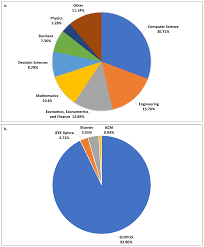Cryptocurrency Hybrid Prediction Model Explained have emerged as an essential part of the financial landscape, attracting traders, investors, and researchers. Given the volatile nature of digital currencies like Bitcoin, Ethereum, and others, predicting price movements is a challenging yet rewarding task. Advanced predictive models, especially hybrid prediction models, have opened new avenues in cryptocurrency analysis. This article explains what a cryptocurrency hybrid prediction model is, how it works, and why it stands out as a powerful tool for forecasting.

What is a Cryptocurrency Hybrid Prediction Model?
A Cryptocurrency hybrid model prediction of outcome is an advanced analytical approach that integrates multiple predictive techniques to achieve better accuracy and robustness. Often, these techniques include integration of various machine learning algorithms, statistical models, and sometimes domain-specific methods to predict the outcome of events. Hybrid models related to cryptocurrency seek predictions for price movements, trading volumes, or market trends by leveraging diverse data sources and methodologies.
The traditional models that include linear regression and moving averages for financial forecasting lack the capacity to handle the complexities and dynamics involved in cryptocurrency markets. Hybrid models are meant to bridge the gap, providing a comprehensive framework that can accommodate the strengths of different predictive techniques.
Components of a Cryptocurrency Hybrid Prediction Model
Machine Learning Algorithms:
- Cryptocurrency Hybrid models rely heavily on machine learning (ML). Most algorithms used in hybrid models for pattern identification include Support Vector Machines (SVM), Random Forests, and Neural Networks. Such algorithms can use historical price data, sentiment analysis, and technical indicators to predict future values.
Statistical Methods:
- Time series analysis and autoregressive integrated moving average (ARIMA) are also widely used traditional statistical approaches in hybrid models. These techniques have been proved to be efficient in capturing the trends and seasonality of data, which is critical for short-term prediction.
Sentiment Analysis Cryptocurrency:
- Public opinion greatly affects the cryptocurrency market. Hybrid models incorporate sentiment analysis through extracting data from social media platforms, forums, and news outlets. Natural Language Processing (NLP) tools analyze the data to give a measure of the market sentiment, which is often a leading indicator of price movements.
Blockchain Data:
- Blockchain network transactional data gives an insight into market activity. The volume of transactions, wallet activity, and mining statistics are metrics that can be useful in the prediction process.
Technical Indicators:
- MA, RSI, and Bollinger Bands are indicators that help to gauge the trend and momentum of the market. These are very helpful for short-term trading strategies.
How Does a Cryptocurrency Hybrid Prediction Model Work?

The Cryptocurrency hybrid prediction model works by combining the output from its different components to create one unified forecast. Here’s an overview of the working process:
Data Collection:
- In the data cleansing and This model aggregates data from different sources- historical price data, market news, social media sentiment, blockchain metrics, and many more. All this data is the basis upon which analysis is done.
- standardization processes, collected data is cleaned and standardized to provide consistency. Missing values are handled and outliers are addressed to improve the model’s accuracy.
- Secondly, Key features are extracted from the data: these include price trends, trading volumes, and sentiment scores. These features are input into the predictive algorithms.
Model Integration
- The hybrid model integrates various predictive techniques, with each component addressing specific aspects of the market. For instance, machine learning algorithms may focus on pattern recognition, while statistical methods analyze time-dependent trends.
Prediction and Validation:
- The model generates predictions based on the integrated analysis. These predictions are validated using historical data to assess their accuracy. The model is fine-tuned based on the validation results.
Output Interpretation Cryptocurrency Hybrid:
- The final output is actionable, such as the expected price movements or market trends. These insights can guide trading strategies and investment decisions.
Advantages of Cryptocurrency Hybrid Prediction Models

Improved Accuracy:
- Cryptocurrency Hybrid models minimize the chances of errors and increase predictive accuracy because of the combination of multiple methodologies.
Robustness:
- Hybrid models are more adaptable to market volatility and can handle diverse data sources effectively.
Comprehensive Analysis:
- The integration of technical, fundamental, and sentiment analysis provides a more holistic view of the market.
Customizability:
- These models can be customized to a specific use case, whether it is for short-term trading or long-term investment strategies.
Challenges and Limitations Cryptocurrency
Hybrid prediction models have a few challenges despite their benefits:
- Complexity: Developing and implementing a hybrid model requires a person to have expertise in several domains, such as data science, finance, and blockchain technology.
- Data Quality: This will depend on the quality of the input data. Poor quality of data can easily provide misleading results when used for predictions.
- Computational Resources: The hybrid models would require lots of computational power. Not everyone has this privilege.
Conclusion
Cryptocurrency hybrid prediction models are the most significant leap in financial forecasting. By leveraging the strengths of diverse predictive techniques, these models offer a more accurate and comprehensive approach to understanding the dynamic cryptocurrency market. Challenges remain, but ongoing advancements in technology and data availability are likely to enhance the effectiveness of these models, making them an indispensable tool for traders, investors, and analysts
Read more:https://virtualgenius.online/